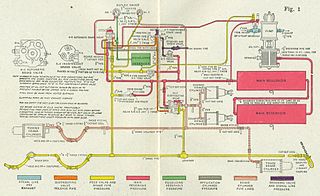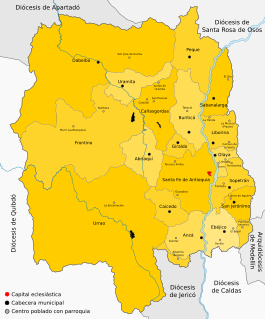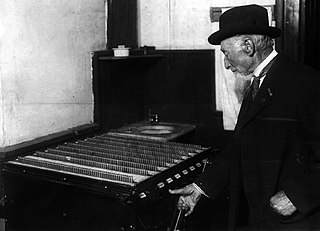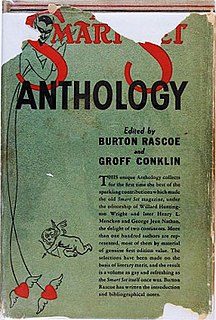Related Research Articles

The pipe organ is a musical instrument that produces sound by driving pressurized air through the organ pipes selected from a keyboard. Because each pipe produces a single pitch, the pipes are provided in sets called ranks, each of which has a common timbre and volume throughout the keyboard compass. Most organs have many ranks of pipes of differing timbre, pitch, and volume that the player can employ singly or in combination through the use of controls called stops.

A railway air brake is a railway brake power braking system with compressed air as the operating medium. Modern trains rely upon a fail-safe air brake system that is based upon a design patented by George Westinghouse on April 13, 1869. The Westinghouse Air Brake Company was subsequently organized to manufacture and sell Westinghouse's invention. In various forms, it has been nearly universally adopted.

The French Congo or Middle Congo was a French colony which at one time comprised the present-day area of the Republic of the Congo and parts of Gabon, and the Central African Republic. In 1910, it was made part of the larger French Equatorial Africa.

A theatre organ is a type of pipe organ developed to accompany silent films, from the 1900s to the 1920s.
Tracker action is a term used in reference to pipe organs and steam calliopes to indicate a mechanical linkage between keys or pedals pressed by the organist and the valve that allows air to flow into pipe(s) of the corresponding note. This is in contrast to "direct electric action" and "electro-pneumatic action", which connect the key to the valve through an electrical link or an electrically assisted pneumatic system respectively, or "tubular-pneumatic action" which utilizes a change of pressure within lead tubing which connects the key to the valve pneumatic.
Professor Craig Kennedy is a character created by Arthur B. Reeve.

The Roman Catholic Archdiocese of Madrid is one of Spain's fourteen metropolitan archbishoprics. Since 28 August 2014 the archbishop of Madrid has been Carlos Osoro Sierra.
Francis Conrad Osborn Sr. was a teacher, businessman and inventor. He held about 50 patents for cash register designs, springless scales, and other devices.

The Fleming valve, also called the Fleming oscillation valve, was a thermionic valve or vacuum tube invented in 1904 by English physicist John Ambrose Fleming as a detector for early radio receivers used in electromagnetic wireless telegraphy. It was the first practical vacuum tube and the first thermionic diode, a vacuum tube whose purpose is to conduct current in one direction and block current flowing in the opposite direction. The thermionic diode was later widely used as a rectifier — a device which converts alternating current (AC) into direct current (DC) — in the power supplies of a wide range of electronic devices, until beginning to be replaced by the selenium rectifier in the early 1930s and almost completely replaced by the semiconductor diode in the 1960s. The Fleming valve was the forerunner of all vacuum tubes, which dominated electronics for 50 years. The IEEE has described it as "one of the most important developments in the history of electronics", and it is on the List of IEEE Milestones for electrical engineering.

The Roman Catholic Archdiocese of Santa Fe de Antioquia is an archdiocese located in the city of Santa Fe de Antioquia in Colombia.
Willow River is a community northeast of Prince George, on the northeast bank of the Willow River, 2.5 kilometres (1.6 mi) southeast of the confluence with the Fraser River, in central British Columbia. The name derives from the many willow swamps in the river valley. Comprising about 150 residents, it has a general store/post-office, a volunteer fire department, church building and a small community hall. Street map.

The Northern Front was an army group of the Imperial Russian Army during the World War I. It was responsible for carrying out operations against the Central Powers along a front line that stretched 280 kilometers, from Riga in the north down to northern Belarus. It was established in August 1915 when the Northwestern Front was split into the Northern and Western Front following the Great Retreat, and existed until the demobilization of the Russian army in 1918 due to the unrest from the Russian Revolution. In 1917 it had a total troop strength of 1.4 million men.
"Tubular-pneumatic action" refers to an apparatus used in many pipe organs built during the late 19th and early 20th centuries. The term "tubular" refers to the extensive use of lead tubing to connect the organ's console to the valves that control the delivery of "wind" to the organ's pipes. Many such organs are extant 100 or more years after their construction.

John McTammany (1845–1915) was a Scottish-born American inventor who is credited with a number of patents. He immigrated to the United States as a teenager and served in the Civil War.

Edwin Scott Votey was an American businessman, inventor, industrial designer, and manufacturer of pianos and organs. He worked in the organ field all his adult life and had over twenty patents. He invented or co-invented several inventions for World War I. One was a pilotless airplane that was going to be used to drop bombs on the enemy but was never used.

The Smart Set Anthology is an anthology of selections from The Smart Set literary magazine, edited by Burton Rascoe and Groff Conklin. It was first published in hardcover by Reynal & Hitchcock in 1934, and reprinted as The Smart Set Anthology of World Famous Authors by Halcyon House in the same year. It was reissued by Grayson as The Bachelor's Companion in 1944. The book has the distinction of being the first anthology with which Conklin was involved in an editorial capacity; he went on to become a prolific anthologist, mostly of science fiction.
Martin Frisch was a Hungarian/American mechanical engineer, director of Foster Wheeler Corporation in New York City, and inventor. He is known for his contributions to the "development of modern practices in fuel pulverizing and steam generation.", and as recipient of the 1958 ASME Medal
The Committee on Pensions was a standing committee of the United States Senate from 1816 to 1946, when the Legislative Reorganization Act of 1946 abolished it, moving its functions to the Committee on Finance.
References
- ↑ "OHS Pipe Organ Database". pipeorgandatabase.org.
- 1 2 Ochse, Orpha (1975). The history of the organ in the United States . Bloomington: Indiana University Press. ISBN 0253328306. OCLC 1007842.
- ↑ Landon, John W. (1983). Behold the mighty Wurlitzer : the history of the theatre pipe organ. Westport, Conn.: Greenwood Press. ISBN 0313238278. OCLC 9412256.